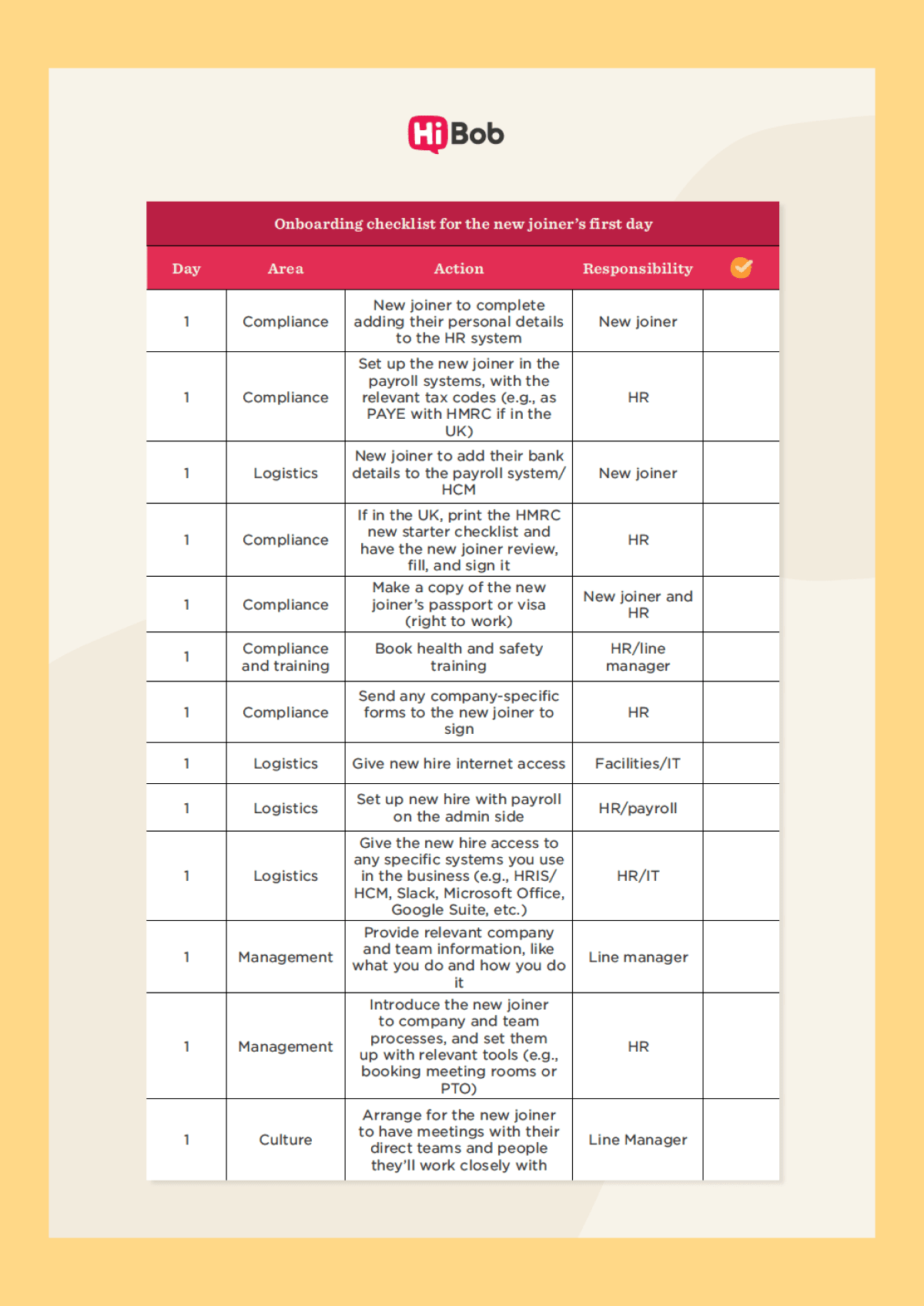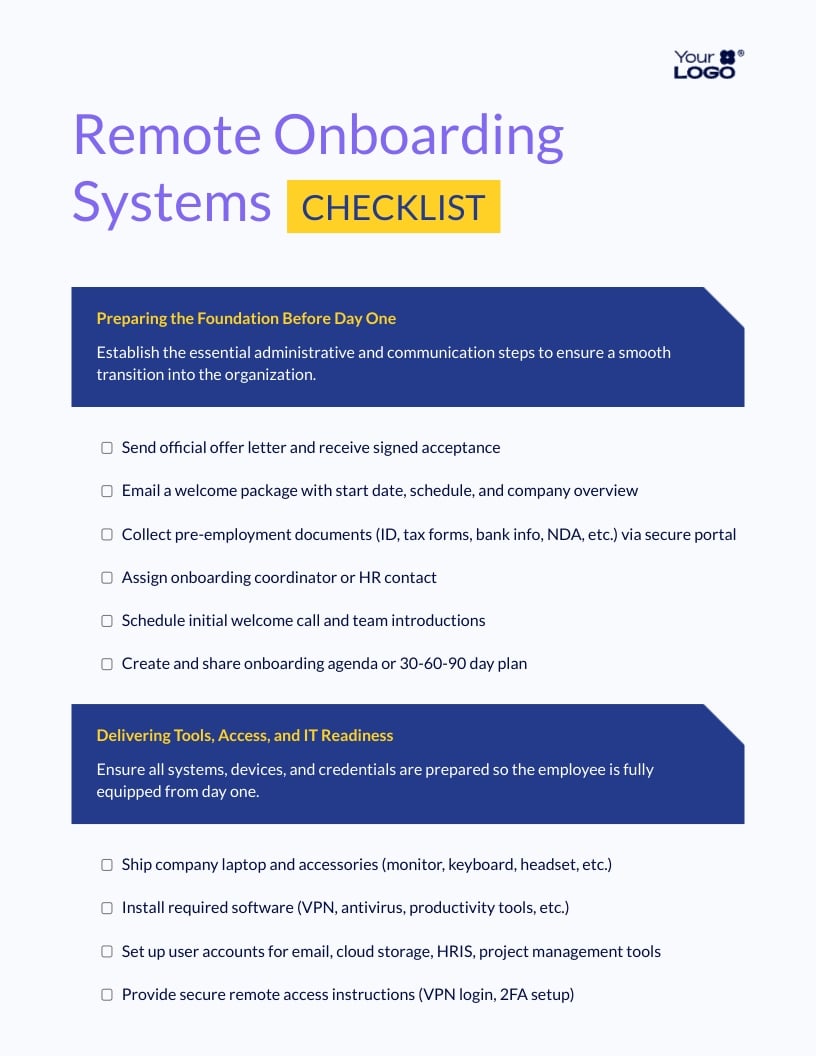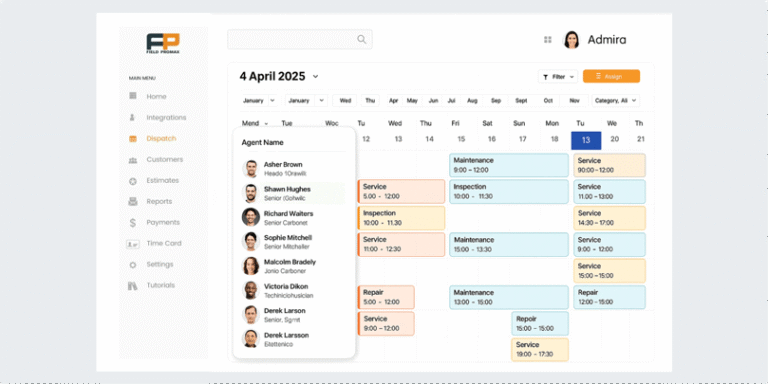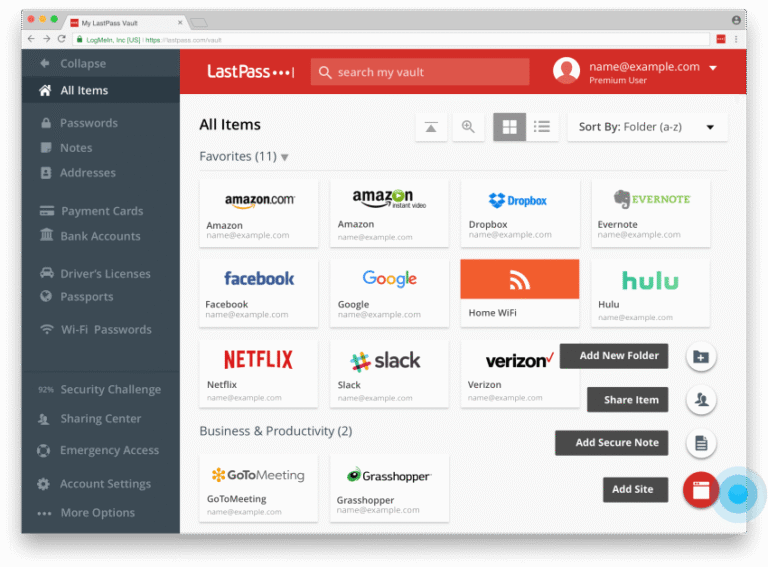Tools for Onboarding Interns in Remote Companies: Ultimate Guide
Bringing interns into your remote company can feel overwhelming. You want them to feel welcomed, clear about their role, and ready to contribute — all without the benefit of face-to-face interaction.
That’s where the right tools come in. They help you handle paperwork, introduce your company culture, and build connections effortlessly, even from a distance. If you’re aiming to onboard interns smoothly and set them up for success, this guide will walk you through the best tools tailored for remote companies like yours.
Keep reading to discover how you can transform your onboarding process and make every intern’s first day a great experience.

Credit: www.hibob.com
Pre-boarding Essentials
Preparing interns before their first day shapes a smooth start. Pre-boarding ensures they feel ready and welcomed from the beginning. Remote companies must focus on clear communication and proper setup ahead of time.
This stage builds a strong foundation. It reduces confusion and helps interns settle quickly into their roles. The right tools and materials set the tone for success.
Contact Before Start Date
Reach out to interns early to confirm start details. Share important dates, schedules, and expectations clearly. Answer any questions they may have to ease concerns. This contact builds trust and shows the company cares.
Set Up It Accounts
Create all necessary IT accounts well before the start date. Provide access to email, project management, and communication tools. Ensure login credentials work to avoid delays. This step allows interns to hit the ground running.
Prepare Virtual Workspace
Design a digital workspace tailored for remote interns. Organize folders, files, and software they will need. Include links to training materials and company resources. A clean and ready workspace boosts productivity and focus.
Send Welcome Materials
Deliver welcome emails or packets to make interns feel valued. Include a welcome letter, company overview, and team introductions. Add any helpful guides or FAQs for quick reference. These materials create a friendly first impression.

Credit: www.beyondintranet.com
Compliance And Paperwork
Handling compliance and paperwork is crucial in onboarding interns remotely. It sets a clear foundation for legal and administrative processes. This helps avoid issues later and ensures smooth integration. Remote companies need reliable tools to manage these tasks efficiently. The right tools simplify document handling and policy communication. They also support HR processes while keeping everything organized and accessible.
Complete Legal Documents
Interns must sign legal papers before starting work. These include contracts, confidentiality agreements, and tax forms. Digital tools allow secure electronic signing and storage. This speeds up the process and reduces errors. Companies can track which forms are completed and send reminders. Keeping legal documents updated protects both the intern and the company.
Explain Company Policies
Clear communication of company rules is vital for remote interns. Tools that present policies in simple formats help interns understand expectations. Interactive guides or videos make learning easier. Tracking acknowledgment ensures interns read and accept policies. This reduces misunderstandings and supports a positive work culture.
Handle Hr Formalities
HR tasks include setting up payroll, benefits, and work schedules. Automated systems manage these formalities without delays. They provide interns with access to necessary resources and contacts. HR tools also store important intern information securely. This organization helps HR teams work efficiently and maintain compliance.
Role Clarity
Role clarity is essential when onboarding interns in remote companies. Clear understanding of duties helps interns perform well and feel confident. It reduces confusion and boosts productivity. Role clarity creates a solid foundation for a successful internship experience.
Define Responsibilities
Start by listing all tasks the intern will handle. Use clear and simple language. Avoid jargon or complex terms. Explain daily duties and long-term projects. This helps interns know exactly what to do. Tools like task management apps can organize these responsibilities.
Set Performance Expectations
Explain how work quality and deadlines will be measured. Tell interns what success looks like in their role. Share examples of good performance. Use feedback tools to track progress regularly. Clear expectations help interns stay focused and improve continuously.
Align With Company Goals
Show how the intern’s work supports the company’s mission. Connect tasks to bigger business objectives. This creates a sense of purpose and motivation. Use company newsletters or presentations to share goals. Alignment helps interns understand their impact on the team.
Culture Introduction
Introducing company culture to remote interns is essential. It sets the tone for their experience and work. A strong culture helps interns feel connected and motivated, even from a distance.
Culture introduction covers values, team norms, mission, and vision. Clear communication of these elements builds trust and engagement. Let’s explore key tools to share culture effectively with remote interns.
Share Company Values
Start by sharing the core values that guide your company. Use simple language and examples to make values clear. Videos or presentations work well for remote settings. Encourage questions to ensure understanding. Values shape behavior and decision-making in the team.
Explain Team Norms
Team norms define how members interact and work together. Explain communication styles, meeting etiquette, and work hours. Provide guidelines on collaboration tools and response times. Make norms visible in shared documents or intranet pages. Consistent norms reduce confusion and build harmony.
Introduce Mission And Vision
Describe the company’s mission, the purpose behind your work. Explain the vision, the future the company strives to create. Use stories or examples to make these ideas relatable. Aligning interns with mission and vision inspires commitment. It helps them see their role in the bigger picture.
Connection And Integration
Connection and integration are vital for onboarding interns in remote companies. Building strong bonds early helps interns feel part of the team. It reduces feelings of isolation and boosts motivation. Creating a welcoming environment supports better communication and collaboration. These steps make remote work more engaging and productive.
Assign Welcome Buddy
Assign a welcome buddy to each intern. This person guides the intern through the first days. They answer questions and provide support. A buddy helps the intern learn company culture and norms. This relationship builds trust and comfort quickly.
Add To Communication Channels
Add interns to all relevant communication channels. Include email groups, chat apps, and project boards. This keeps interns informed and involved in daily activities. Being part of conversations helps them understand team dynamics. It also encourages them to share ideas and ask questions.
Schedule Team Introductions
Schedule team introductions early in the internship. Arrange video calls or virtual meetings with key team members. This helps interns recognize faces and names. It creates a friendly atmosphere and opens communication lines. Team introductions foster a sense of belonging and teamwork.
Tools For Communication
Effective communication tools form the backbone of onboarding interns in remote companies. They help new interns feel connected and supported despite the physical distance. These tools enable smooth interaction, quick feedback, and clear understanding. Clear communication reduces confusion and builds confidence in new interns.
Choosing the right tools ensures interns stay engaged and informed. It also encourages collaboration and teamwork from day one. Below are essential categories of communication tools that remote companies use to onboard interns successfully.
Video Conferencing Apps
Video conferencing apps allow face-to-face interaction online. They help interns meet their managers and team members visually. Seeing each other builds trust and makes conversations more personal. Popular apps include Zoom, Microsoft Teams, and Google Meet. These apps support group meetings, one-on-ones, and presentations. Video calls also help explain tasks clearly and answer questions in real time.
Instant Messaging Platforms
Instant messaging platforms offer quick and easy text communication. They let interns ask simple questions without waiting for email replies. Messaging apps like Slack, Microsoft Teams chat, or Discord create channels for different topics. These platforms keep conversations organized and accessible. They support sharing files, links, and images instantly. Messaging platforms help build informal connections and keep the team updated throughout the day.
Collaboration Software
Collaboration software combines communication with task management. Tools like Asana, Trello, and Monday.com help interns track their work and deadlines. They allow teams to comment on tasks and share feedback. Collaboration tools make it easy to assign responsibilities and monitor progress. These platforms keep everyone aligned and reduce misunderstandings. Interns can see how their work fits into larger projects, boosting motivation and clarity.
Training And Development Tools
Training and development tools play a vital role in onboarding interns at remote companies. These tools help new interns learn company processes and improve their skills efficiently. They create a structured learning path and keep interns engaged throughout their journey.
Effective training tools also support continuous growth. They provide easy access to learning materials, interactive content, and real-time feedback. This approach helps interns adapt quickly to their roles and contribute meaningfully.
Learning Management Systems
Learning Management Systems (LMS) organize training content in one place. They allow remote interns to access courses anytime and anywhere. LMS platforms track progress, making it easy for managers to monitor learning outcomes.
These systems often include quizzes, videos, and documents. They help interns understand company policies and job-specific skills. LMS tools support self-paced learning, which suits different learning styles well.
Interactive Tutorials
Interactive tutorials engage interns through hands-on activities. They simulate real work tasks and provide instant feedback. This method improves knowledge retention and builds confidence in new skills.
Such tutorials often use videos, quizzes, and step-by-step guides. Interns learn by doing, which speeds up the learning process. These tools also make training more interesting and less overwhelming.
Feedback And Evaluation Tools
Feedback and evaluation tools help track intern performance and growth. They allow managers to give timely, constructive feedback. Regular evaluations highlight strengths and areas for improvement.
These tools often include surveys, checklists, and performance dashboards. They promote clear communication between interns and supervisors. This ongoing feedback loop boosts motivation and learning effectiveness.
Task Management Tools
Task management tools play a vital role in onboarding interns at remote companies. They help organize work and make communication clear. These tools ensure interns understand their duties and deadlines. They also support team collaboration and keep projects on track. Using task management tools reduces confusion and increases productivity during the onboarding process.
Project Tracking Software
Project tracking software helps monitor the progress of tasks and projects. It provides a visual overview of deadlines and milestones. Interns and supervisors see what work is complete and what is pending. This software helps remote teams stay aligned and meet goals efficiently. Examples include tools that use boards, lists, or timelines to organize work.
Task Assignment Platforms
Task assignment platforms allow managers to delegate work clearly. Each intern receives specific tasks with detailed instructions. These platforms notify interns about new assignments and due dates. They also enable easy communication for questions or updates. Clear task assignment reduces misunderstandings and keeps the team organized.
Progress Monitoring
Progress monitoring tools track the completion of assigned tasks. They provide real-time updates on each intern’s work status. Supervisors can quickly spot delays or issues and offer support. Monitoring progress encourages accountability and helps interns stay focused. It also builds trust by showing transparency in work performance.
Equipment And Access
Providing the right equipment and access is key to onboarding interns in remote companies. It sets the foundation for their work and productivity. Remote interns need devices and software to perform tasks smoothly. Proper setup ensures they start without delays or confusion.
Clear processes for delivering devices, setting up software, and maintaining security create a smooth onboarding experience. These steps help interns feel prepared and connected to the team.
Delivering Work Devices
Send laptops or tablets to interns before their first day. Choose devices that meet job requirements. Use reliable shipping services for safe delivery. Include chargers, accessories, and user guides. Confirm receipt and functionality with the intern. This prevents delays in starting work and reduces technical issues early on.
Setting Up Software Access
Create accounts for all necessary software tools. Include email, project management, and communication apps. Provide clear instructions to log in and use each tool. Offer training sessions or tutorials if needed. Ensure access is ready before the intern’s start date. This helps them begin work confidently and stay connected with the team.
Ensuring Security Compliance
Implement strong password policies for all accounts. Use multi-factor authentication to protect sensitive data. Educate interns on company security rules and best practices. Regularly update software to fix vulnerabilities. Monitor access to prevent unauthorized use. Security compliance protects company information and builds trust with interns.

Credit: www.hibob.com
Tracking Onboarding Progress
Tracking onboarding progress is essential for remote companies welcoming interns. It ensures smooth integration and timely completion of tasks. Monitoring progress helps managers spot challenges early. It also boosts intern confidence by showing clear steps and goals. Using the right tools keeps the process organized and transparent.
Checklists And Milestones
Checklists break down onboarding into simple tasks. They help interns know what to complete and when. Milestones mark important achievements during onboarding. These tools provide clear goals and a sense of accomplishment. Managers can easily track what tasks are done or pending.
Regular Check-ins
Regular check-ins keep communication open between interns and managers. Short video calls or messages work well. These meetings allow feedback and clarify doubts quickly. They also build trust and help interns feel supported. Consistent check-ins prevent interns from feeling isolated in remote settings.
Adjusting Onboarding Plans
Onboarding plans may need changes based on intern progress. Flexibility helps meet each intern’s unique needs. Managers can add more training or slow down tasks if needed. Adjustments keep interns motivated and reduce stress. A dynamic plan ensures better learning and engagement throughout onboarding.
Best Practices For Remote Interns
Onboarding interns in a remote setting needs clear strategies to ensure success. Best practices help interns feel connected, supported, and productive. These approaches reduce confusion and boost engagement.
Implementing effective methods improves the overall internship experience. It helps interns quickly adapt and contribute meaningfully to the team.
Encourage Open Communication
Create a welcoming space for questions and feedback. Use tools like chat apps and video calls to keep conversations flowing. Regular check-ins help spot issues early and build trust. Clear communication reduces misunderstandings and keeps everyone aligned.
Foster Social Engagement
Encourage informal chats and virtual team activities. Social bonds improve morale and create a sense of belonging. Organize online coffee breaks or casual hangouts. These moments help interns feel part of the team despite the distance.
Provide Continuous Support
Offer guidance throughout the internship, not just at the start. Assign mentors or buddies to assist with challenges. Share resources and learning materials regularly. Continuous support boosts confidence and skill growth for remote interns.
Frequently Asked Questions
What Are The 5 C’s Of Onboarding?
The 5 C’s of onboarding are Compliance, Clarification, Culture, Connection, and Check-back. They ensure legal alignment, role clarity, cultural fit, team integration, and ongoing support for new hires.
How Do I Onboard A New Remote Employee?
Complete new hire paperwork and set up IT accounts. Deliver equipment and send a welcome kit. Share a clear agenda and assign a welcome buddy. Add them to communication channels and inform the team. Foster connections to integrate the new remote employee smoothly.
How To Onboard Interns?
Onboard interns by completing paperwork, clarifying roles, providing tools, introducing company culture, and fostering team connections. Send a welcome email and assign a mentor. Prepare their workspace or virtual setup, and communicate expectations clearly for smooth integration and success.
What Are 4 C’s For Onboarding?
The 4 C’s of onboarding are Compliance, Clarification, Culture, and Connection. They ensure legal alignment, role understanding, company values, and team integration.
Conclusion
Choosing the right tools simplifies remote intern onboarding. Clear communication and easy access to resources matter most. These tools help interns understand tasks and company culture. They also support building team connections from afar. A smooth start boosts intern confidence and productivity.
Use these tools to create a welcoming experience. Effective onboarding sets the stage for long-term success.







